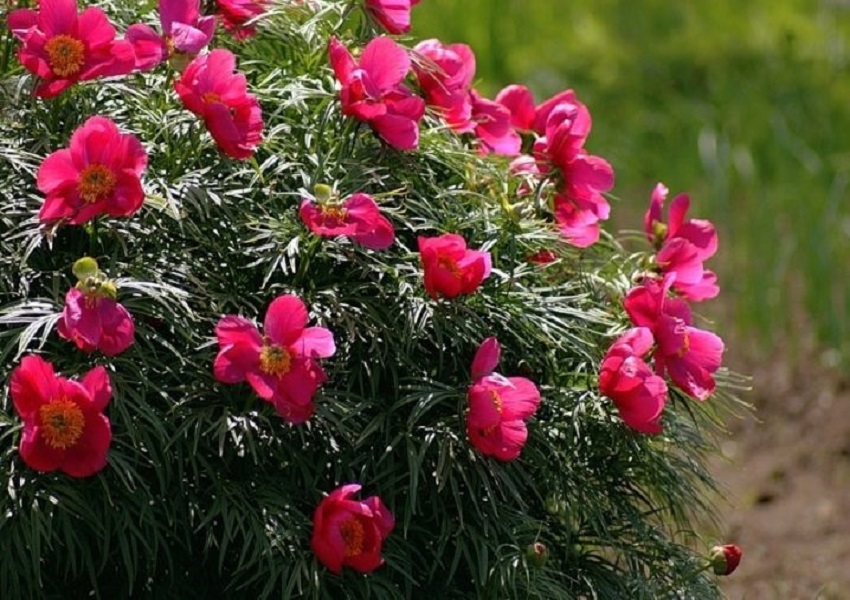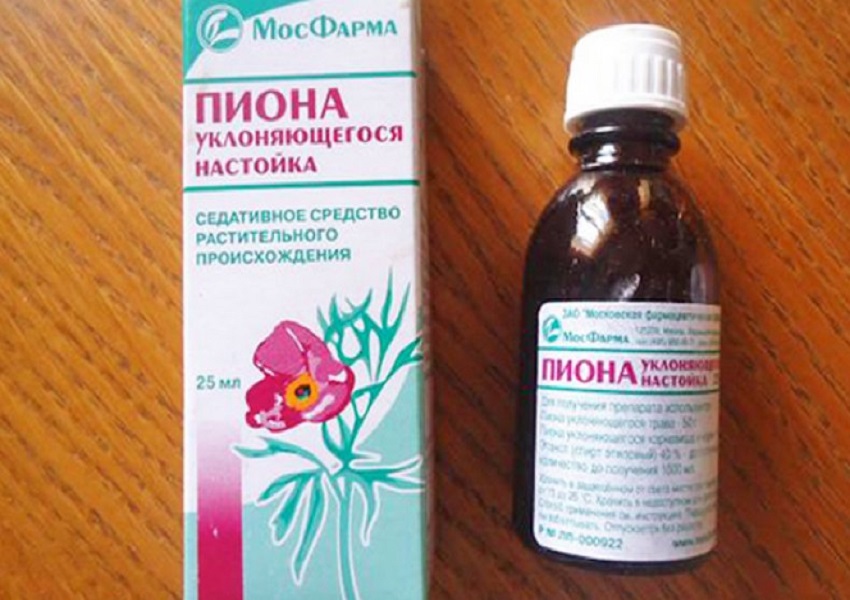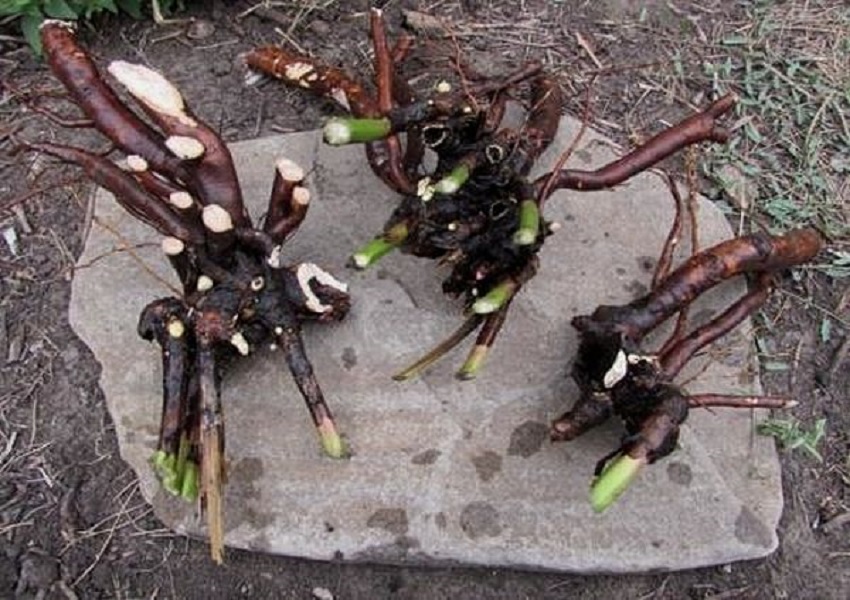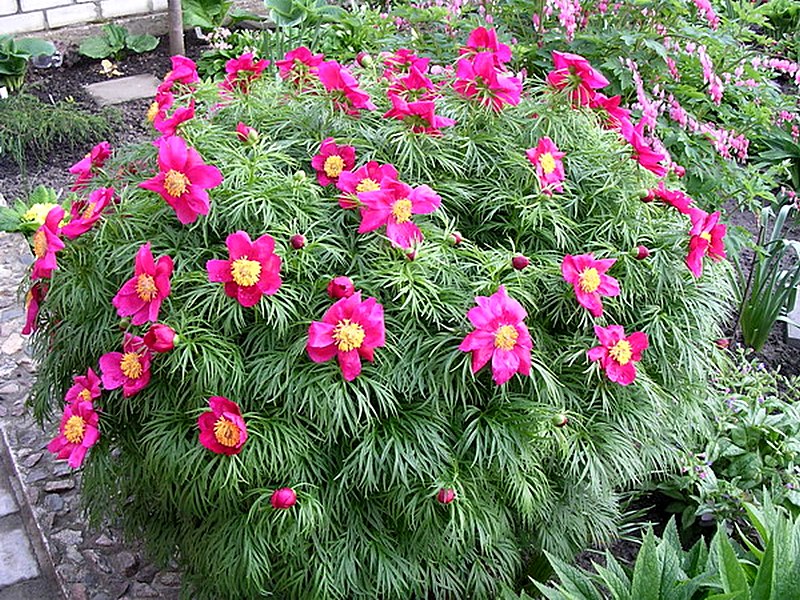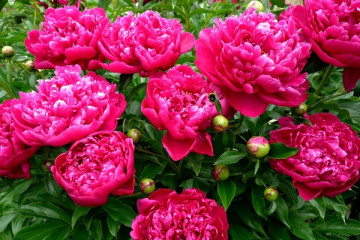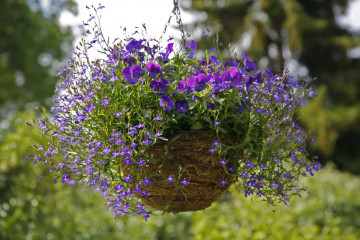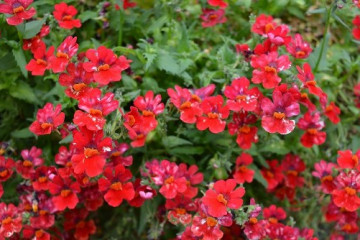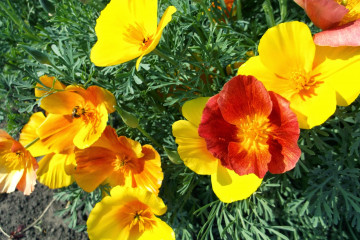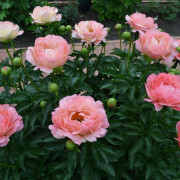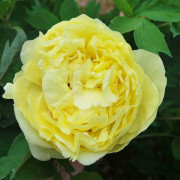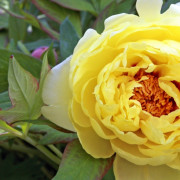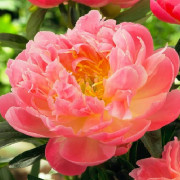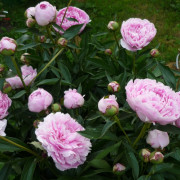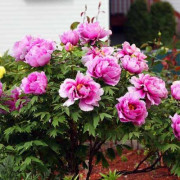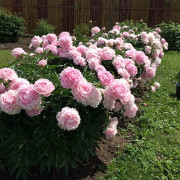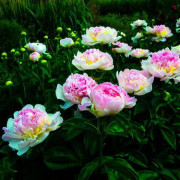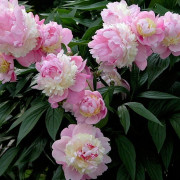Peony evading (Maryin root) - growing in the garden
Content:
The evading peony will be a wonderful decoration for any summer cottage. It is popular with landscape designers for its ability to change the color scheme during flowering. The blooming culture has medicinal properties; medicinal tinctures and decoctions are prepared from its parts.
Evasive peony (Maryin root) - what is this variety
The plant belongs to perennial crops, the height of an adult paeonia bush can reach more than 10 cm in height. It is a large shrub with branched stems, each of which has a flower. The purple-pink buds can be up to 13 cm in diameter.
The plant has a well-developed root system that has fusiform branching. With growth, the roots can go to a depth of 90 cm. This factor must be taken into account when transplanting. This is not easy to do. New roots grow every year, which actively develop during the growing season.
The pistils contain black seeds, which ripen at the end of summer - the first month of autumn. They can be used to breed new bushes.
Advantages and disadvantages of the variety
The advantages of a wild peony include its unpretentiousness, it can grow anywhere and at the same time feel tolerable. Naturally, if you provide it with ideal conditions, the flower will look better. The buds will increase in size, there will be more inflorescences, the foliage will acquire a rich green color.
Shrubs do not require frequent replanting. It is enough to change the place once every ten years.
Healing properties
Peony Maryin root contains a lot of nutrients. On the basis of this plant, medicinal decoctions are made, which have the following medicinal properties:
- Pain relieves. Tinctures are used to relieve pain symptoms of various origins.
- Relieve spasms, convulsions. Ingestion provides the normalization of nerve impulses. This is due to the presence in the composition of substances that have anticonvulsant and antispasmodic properties.
- Calm down. Peony root is an excellent natural antidepressant that quickly relieves fatigue and depressed mood.
- They act as a bactericidal and antiviral agent. The natural antibiotic is actively used to combat pathogenic microorganisms. And also for the removal of inflammatory processes.
Taking herbal decoctions inside helps to improve the performance of the circulatory system.This is due to the fact that the evading peony has a hemostatic property. The plant is widely used in folk medicine.
Growing a flower, how to plant it in open ground
The red peony is easy to grow. It is enough to carry out a standard set of procedures.
Planting by root cuttings
Suitable cuttings are taken only from mature bushes. For this, the plant is carefully removed from the soil, cleaned of an earthen coma. Divide the root system into the required number of parts. But each must have its own roots, as well as at least 2 kidneys. After that, each part is seated in a separate hole in the traditional way.
What time is the boarding
The ideal time for planting a marin root is autumn. Grows at home and outdoors.
Location selection
The peony is a wild flower. Undemanding to the composition of the substrate. External conditions are not very important for him. It grows well in full sun and shaded areas.
House flowers are best kept away from heating radiators. They can dry it out and cause disease. It is better to choose a place that will be protected from a strong draft. A bush will take root well under garden trees if planting is done in open ground.
How to prepare the soil and flower for planting
Before planting, it is necessary to prepare the planting material. To do this, the roots are dried, after which the cuts are sprinkled with crushed wood ash.
Planting pits require preparation. The earth, where they will be located, should be dug up and a mixture of superphosphate, sand and potassium should be added to it. These substances will give the substrate the desired friability.
Planting procedure step by step
The seedling is planted in a pre-prepared hole. Experienced flower growers recommend adhering to the following instructions:
- Pits are made, the depth of each should be 2 bayonets of a shovel, and the diameter is 50 cm. The bottom is covered with a drainage layer.
- Spread out a nutritious substrate, which includes sand, garden soil, humus. The plant is placed in the center so that the roots are not tangled or intertwined.
- Pour on top and lightly tamp the earth. At the very end, the seedlings are watered abundantly.
- They also install a support near the bush and tie the stems to it so that they do not bend or break.
Seed planting
The seed planting method is not so popular among gardeners. This is because the process takes a long time. First, they are stratified in a special reservoir filled with wet sand. Usually the period lasts 40-45 days. The temperature of +20 ℃ should be maintained in the container.
Then the seed is collected in the refrigerator for 5 months. After that, they are laid out on a sunny windowsill and wait for the emergence of seedlings. During this period, they are moisturized. Seedlings are planted in open ground for 3 years.
Plant care Maryina grass
Peony is easy to care for, it absolutely does not require serious intervention. Even under such conditions, a healthy bush grows, which will delight the owner with a beautiful and abundant flowering.
Watering and feeding
The plant does not require frequent moisture. This is because moisture accumulates in its tuberous root system. During the growing season, procedures are carried out every two weeks. Two buckets of water are taken for an adult bush. It is impossible to overmoisten the flower, as the roots can rot.
As for dressing, then mineral complexes are ideal for young bushes. They are applied once every 1-1.5 months. An adult plant is fertilized with the onset of spring; urea is perfect for this. Then, before the fall, three more minerals are injected.
Mulching and loosening
Do not allow the flower to overgrow with weed grass. Loosening is carried out on a regular basis. This is done after watering or after rain. The depth is approximately 10-15 cm.
Preventive treatment
Preventive treatment is carried out to avoid problems, in particular the appearance of diseases and attacks of pests that can harm the crop. Fungicidal preparations are perfect for this. Bushes are sprayed with solutions. As an additional measure, spill the earth with Bordeaux liquid.
Blooming peony
The blooming peony looks incredibly beautiful. It will be a wonderful decoration for any garden plot. The first buds should be expected in the third year of planting.
A period of activity and rest
The Maryin root begins to bloom in the middle of May and continues until June. On average, the process takes about two weeks. Actually, during this period, the procurement of raw materials takes place. The peony begins to bear fruit at the end of August.
Care during and after flowering
It is important to immediately remove faded flowers from the plant. This is due to the fact that in this way you can extend the flowering period. It is required to carry out abundant moistening of the earth. Do not dry out under any circumstances.
What to do if it does not bloom, possible reasons
There are several reasons why a peony may not be blooming. Most often this happens due to improper fit or non-compliance with the rules for care. It is important when transplanting a bush to divide the rhizome into several parts. This is done without fail, otherwise the buds can not be expected.
Peonies after flowering
After the flower has faded, it needs care. These procedures are not complicated, which is why every florist can carry out them.
Transfer
Preventive measures are carried out in order to prevent the occurrence of diseases. To do this, the root system is removed and immediately buried in a new hole, but the roots should be located at a depth of 5 cm from the surface of the substrate.
Pruning
Pruning of bushes is carried out in the autumn, but before the frost occurs, they are cut so that their height is not more than 10 cm.
Preparing for winter
The use of shelters is not required for an adult bush, it survives even the most severe climatic conditions. But young seedlings need to be protected, because in late autumn they are sprinkled with ash, and spruce branches should be laid on top. Shrubs are pruned to prevent disease.
Diseases and ways to deal with them
The peony has good immunity to various diseases. The only problem that growers can face is this gray rot that occurs due to improper watering.
Preventive measures will help to avoid this problem. To do this, a fungicidal solution is poured under the bush of each plant. Repeat three times with an interval of two weeks.
Dangerous pests that can be found on a flower are:
- bronze;
- aphid;
- ants.
You can get rid of them with the help of insecticides, folk remedies. Apply in accordance with the instructions, otherwise you can harm the physiological process of plants.
